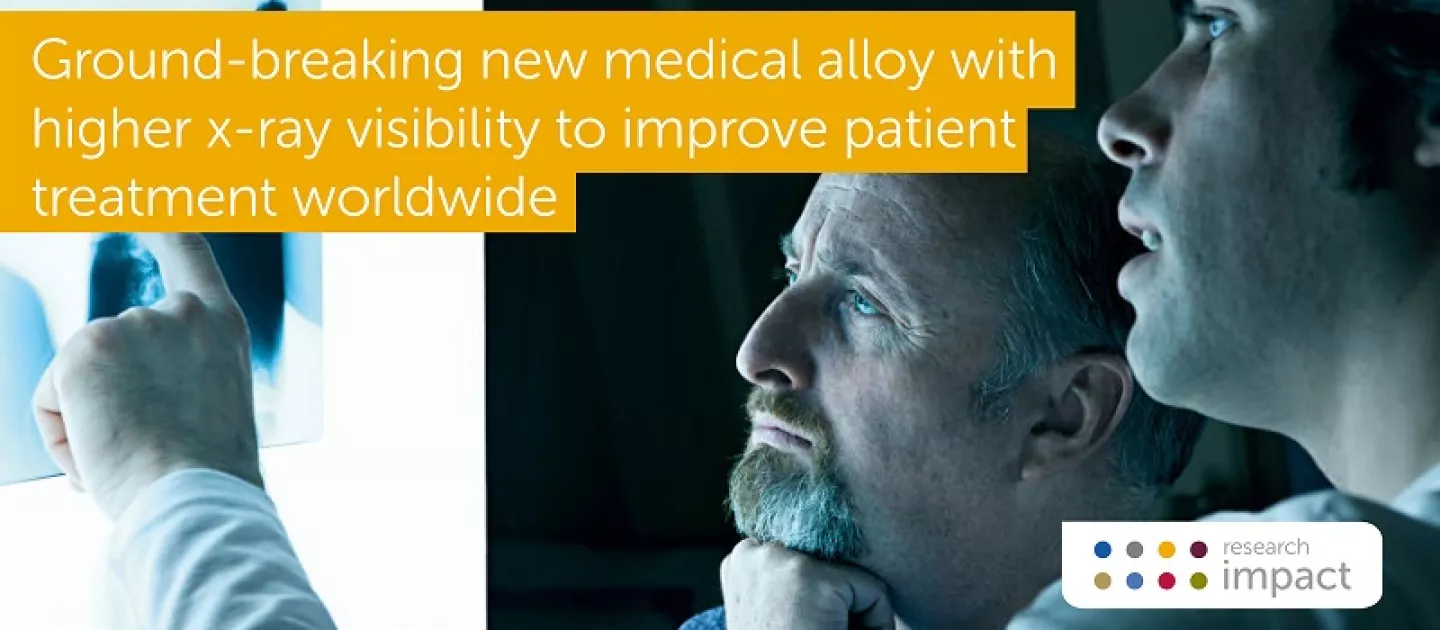Summary of the Impact:
With the development of medical devices such as stents and valves to treat patient trauma, the need for invasive surgical procedures has been greatly reduced. This has led to significant reductions in hospitalisation time and improved patient outcomes. Improvements in the X-ray visibility of these devices is critical to allow surgeons ensure exact placement while keeping the patient’s X-ray exposure to a minimum.
This research will significantly improve treatment quality by reducing time required for treatment, repeat procedures and trauma
Research undertaken at the Materials and Surface Science Institute (MSSI), University of Limerick in partnership with Cook Medical has led to the invention of a unique alloy radiopaque NiTi with enhanced x-ray visibility of 80-100%. Radiopaque NiTi can also be produced at a cost significantly lower than gold or platinum. Dr Tofail Syed, MSSI, University of Limerick explains; “Medical devices made from this new alloy will be highly visible under medical x-ray imaging, making placement, manipulation and application inside the body much easier. This will significantly improve treatment quality by reducing time required for treatment, repeat procedures and trauma. Our solution adds 5-10% more radiopacity than platinum to NiTi, is 15 times cheaper than adding platinum, and retains NiTi’s shape memory and superelastic properties within an acceptable range for medical device application.”
Cook Medical is the largest privately owned medical device manufacturer in the world, with a worldwide workforce of over 10,000. Its Limerick plant employs around 800 people; it is the European distribution centre for Cook products, and the worldwide manufacturer of Cook’s ZilverTM Stent. In 2013, Cook Medical Ireland launched its state-of-the-art R&D facility in Limerick with a dedicated research team to support a large number of industry/academia projects. John Neilan, Director of Research, Cook Medical highlights the significance of this breakthrough; “In addition to impacting patients, this research collaboration has increased medical R&D capacity in Ireland and helped provide highly skilled jobs in both research and manufacturing. The development of this new radiopaque alloy is strategically important for Cook as further R&D responsibility has transferred into Ireland as a result of this successful technology development. This project demonstrates the collaborative industry/academic model for research in Ireland and is now a fundamental part of the Cook Research structure.”
The research was conducted by the University of Limerick in partnership with Cook Medical, and was supported by Enterprise Ireland.
